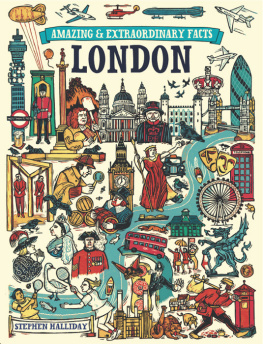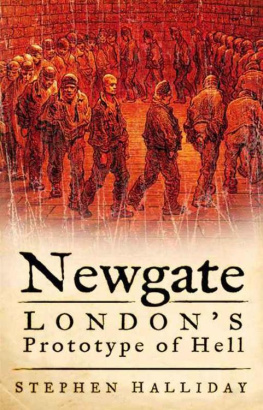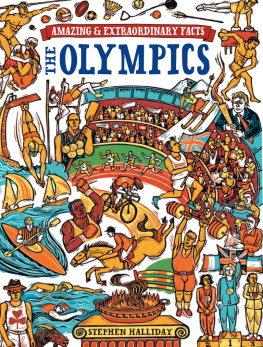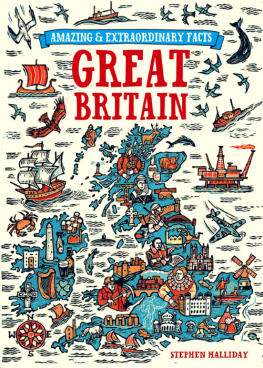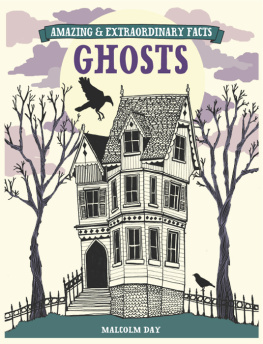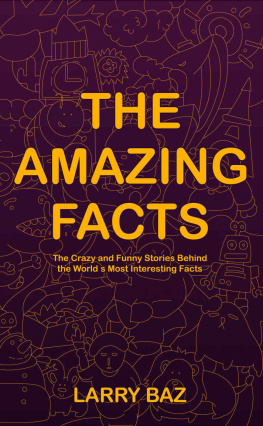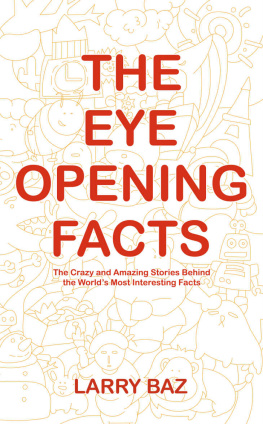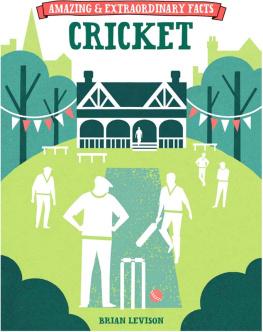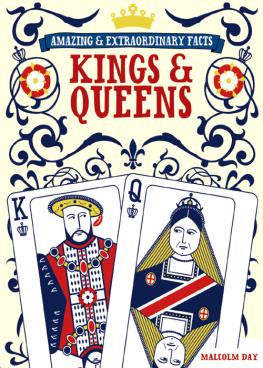AMAZING & EXTRAORDINARY FACTS
LONDON
STEPHEN HALLIDAY

INTRODUCTION
I n 1901 London was, in a very real sense the capital city of the world. As Queen Victoria approached the end of her long reign (she died in January of that year) she reigned over the greatest empire the world had ever seen, comprising about a fifth of its surface area and a quarter of its inhabitants. Pax Britannica, enforced by the Royal Navy, ensured that no major international conflict on the scale of the Napoleonic Wars had taken place for almost a century. The Port of London was by some distance the busiest in the world with its forests of masted vessels bringing food and raw materials from every corner of the world and exporting manufactured goods from Britain, the workshop of the world. And the City of London, within the famous square mile that had first been bounded by its Roman Walls (still visible in many places), was the undisputed centre of world commerce and finance. In the course of a century Londons population had grown from less than a million to more than six million, making it the most populous city on earth. This concentration of humanity had presented tremendous challenges to engineers, builders, social reformers and politicians who had struggled, with some success, to make London a safe place in which to live as well as a prosperous and busy one.It continued to expand up to the outbreak of World War II. Since that time the population of London has fallen as its inhabitants have moved to suburbs and new towns but although it is no longer the worlds largest city it remains the one with the richest history. It is still possible, with little effort, to find traces of the city which was built by the Roman invaders and sacked by an enraged Boudicca, Queen of the Iceni, reputedly buried beneath the feet of busy travellers as they hurry along platform ten of Kings Cross Station. The Roman gates of the city are still remembered in names like Aldgate (home of Geoffrey Chaucer as he watched the Peasants Revolt unfold in 1381) and Cripplegate, close to the lodging house of one William Shakespeare and to a small church, St Giless, which was the scene of a turning point in which Britain fought for its life and that of the free world in 1940. And one cannot move far in London without being reminded of the personalities who made its history: Richard Whittington who helped make London the centre of the trade in wool; Thomas Gresham who ensured that London would become the financial centre which it remains in the 21st century; Prince Albert who, though his support for the Great Exhibition of 1851, left us not only the hall named after him but the Kensington museums which lie behind it. Then there is Big Ben which caused its creator so much trouble that he died prematurely and the Underground Railway which would never have been constructed without the activities of a motley crew of fraudsters, bankrupts and gaolbirds as well as a few honest men. And whatever is that strange London Stone almost hidden behind a grill attached to a bank in Cannon Street, not to mention the metal tube which passes above the trains within Sloane Square Underground Station? Why, thats the River Westbourne of course. And who was John Snow who has a pub named after him just off Carnaby Street? Well, he was a teetotal doctor who found the cause of cholera. This book tells you about all these amazing people and events which helped to make London the worlds most astonishing city, with a surprise around every corner.
The Stone of Brutus
The mythical ancient heart of London keeps a low profile
O pposite Cannon Street station in the City of London is a small stone behind an iron grille set into the wall of 111, Cannon Street. Until recently the premises were occupied by a Chinese bank; now they are home to a sportswear store. The London Stone is easily overlooked by the casual pedestrian but this piece of limestone is at the centre of the legends which surround the creation of London. It is also known as the Brutus Stone and according to legend it was placed in London by a prince of Trojan descent called Brutus (no relation to Julius Caesars assassin) who fled from Troy at the end of the Trojan War. Brutuss arrival is given as 1074 BC (about the time of the likely date of the destruction of Troy). He brought with him his followers known as Brutons or Britons and founded the city of New Troy on the north bank of the Thames. To establish his new kingdom Brutus and his followers had to defeat a race of giants led by Gog and Magog who appear in Christian, Jewish and Islamic literature and who have since come to be associated with the defence of the City.

One of Brutuss successors as ruler of the kingdom of the Britons was King Lud who decided to rename the city after himself as Luds Town, soon to be shortened to London, and Londinium upon the Roman occupation. By the 11th century Brutuss London stone had given its name to a district of the City, marked on maps as Londenstane. The location is recorded in the name of the first mayor of London in 1192, one Henry Fitzailwyn de Londenstane. By that time it was believed that the stone had been used by the Romans as a point from which to measure distances in miles throughout the Roman province of Britain settled in AD 43. This is plausible since the site of the stone was close to the Roman governors palace and to Roman roads such as Watling Street (the present A5).
LONG-DISTANCE LATIN
A Roman mile was one thousand paces, a pace being two steps and measuring five feet. So a Roman mile is about 5,000 feet, slightly less than the 5,280 feet of a modern mile.
Many other legends have become attached to the stone during its long history. The poet William Blake identified it as a place of ritual sacrifice, associated with the Druids. It is one of many stones which are claimed as being that from which King Arthur drew Excalibur. It became enshrined in the history and literature of the City so that possession of the stone came to be associated with possession of the City itself. In Shakespeares play King Henry VI, Part II the rebel Jack Cade, calling himself John Mortimer, enters the stage, strikes his staff on London stone and declares:
Now is Mortimer lord of this city. And here, sitting upon London stone,I charge and command that, of the citys cost, the pissing conduit run nothing but claret wine this first year of our reign.
This event occurred in 1450. Jack Cades head soon found itself on a spike on London Bridge but the stone survived. The stone was a place where deals were made, oaths sworn and rituals enacted for hundreds of years. The Worshipful Company of Spectacle Makers, a City livery company which received its royal charter in 1629, was entrusted with checking the quality of spectacles made. Any found to be defective suffered the fate recorded in a document of 1671: broken, defaced and spoyled both glasse and frame the which judgement was executed accordingly in Canning [Cannon] Street on the remayning part of London Stone where the same were with a hammer broken in all pieces.
The stone has been moved several times. It survived the Great Fire of 1666 and was set into the wall of one of Sir Christopher Wrens finest churches, St Swithins. The church was destroyed by bombing in 1941 but the stone survived unscathed and was moved to its present position. Like the ravens of the Tower of London the stones safety is linked to that of the City, an ancient myth claiming that So long as the Stone of Brutus is safe, so long shall London flourish. The stone itself is a Grade II* listed structure and, almost inevitably, a nearby pub is named after it.

